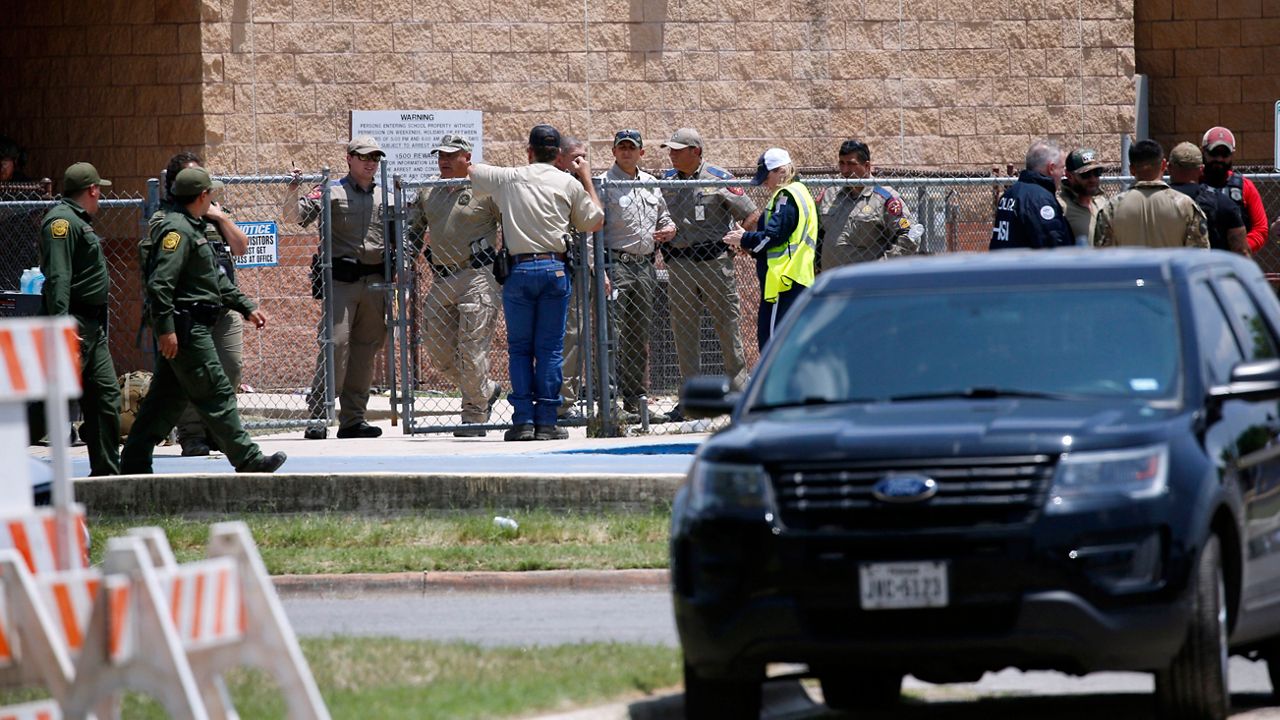A group of over two dozen Congressional Democrats on Tuesday penned a letter to three federal agencies asking for a comprehensive, government-wide review of gun violence prevention strategies present in the nation’s public schools.
The letter was addressed to the heads of the Departments of Justice, Education and Health and Human Services, or attorney general Merrick Garland, education secretary Miguel Cardona and HHS secretary Xavier Becerra, respectively. Lawmakers cited the “horrific and tragic school shooting” in Uvalde, Texas earlier this year – which left 19 children and two teachers dead – as part of a disturbing trend of violence that must be investigated and stopped.
“Our most fundamental role as policymakers and leaders is to ensure the safety and wellbeing of our children,” the lawmakers, led by Rep. Cori Bush, D-Mo., wrote in part. “We therefore write to request that your agencies each conduct a review of gun violence prevention strategies that you are utilizing in schools and establish a comprehensive plan to meet the holistic emotional, health, and safety needs of our nation’s students.”
So far this year, the United States has seen 29 school shootings where at least one person was injured or killed, according to a running tally compiled by Education Week. At least 28 people have died and 57 others have been injured during those shootings, with the incident at Robb Elementary School in Uvalde accounting for the vast majority of this year’s casualties.
Lawmakers asked federal agencies to particularly examine the role that armed officers in schools might play in gun violence, saying Uvalde served as an example where law enforcement officials failed in their sworn duty to protect the children.
Nearly 400 police officers swarmed the school in the hours after news of the shooting was first reported, and a damning report released in mid-July found “egregiously poor decision making” resulted in more than an hour of chaos before the gunman was finally confronted and killed.
The report, written by an investigative committee from the Texas House of Representatives, was the first to criticize both state and federal law enforcement, and not just local authorities in the South Texas city for the bewildering inaction by heavily armed officers.
The gunman fired approximately 142 rounds inside the building — and it is “almost certain” that at least 100 shots came before any officer entered, according to the report, which laid out numerous failures. Among them:
- No one assumed command despite scores of officers being on the scene.
- The commander of a Border Patrol tactical team waited for a bulletproof shield and working master key for a door to the classrooms that may have not even been needed, before entering.
- A Uvalde Police Department officer said he heard about 911 calls that had come from inside the rooms, and that his understanding was the officers on one side of the building knew there were victims trapped inside. Still, no one tried to breach the classroom.
Last week, the Texas Department of Public Safety said it was investigating at least five officers for their response to the May shooting in Uvalde, though they were not publicly identified. Already, the investigation led to the firing of Pete Arredondo, who was chief of the Uvalde ConsolidatedIndependent School District at the time of the shooting.
Still, students returned to class last week in the small Texas town – though Robb Elementary, where the shooting occurred, is permanently closed and will likely be demolished. But a heightened police presence was felt in nearby schools where the survivors of the shooting now attend.
“As lawmakers, we are alarmed by the horrifying accounts of law enforcement negligence in Uvalde,” Tuesday’s letter read in part. “This is particularly troubling as funding for law enforcement increases.”
Lawmakers noted that the city of Uvalde spent 40% of its budget on the police force last year, a concerning fraction particularly given the ineffective response to the Robb Elementary shooting.
Uvalde is not alone in focusing funds on its police force – and, should Congress approve President Joe Biden’s $37 billion request for fighting and preventing crime, cities will have even more money to allocate to their law enforcement.
Biden’s proposal includes $13 billion to help communities hire and train 100,000 police officers over five years.
Lawmakers on Tuesday suggested that instead of increasing funds for law enforcement, that the Biden administration “recommit to public health and safety strategies” by implementing strategies that address the “root causes of conflict that can escalate into violence.”
To that end, the Congressional Democrats asked the Departments of Education, Justice and Health and Human Services to conduct a “holistic review of any and all non-punitive, non-law enforcement preventative safety measures currently in schools, the health and safety impacts of such measures, and steps your agencies intend to take to meet the needs of our child and prevent the onslaught of violence we are currently witnessing in our schools,” to be made public upon its completion.
The Associated Press contributed to this report.



